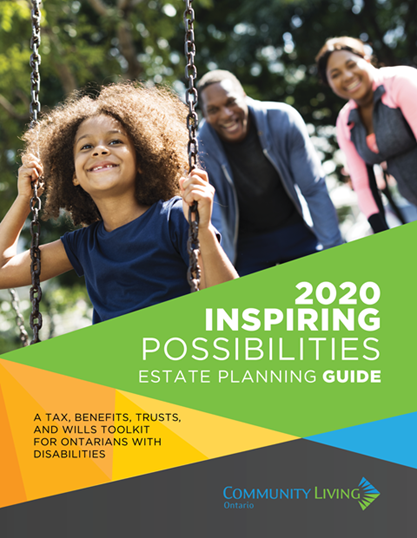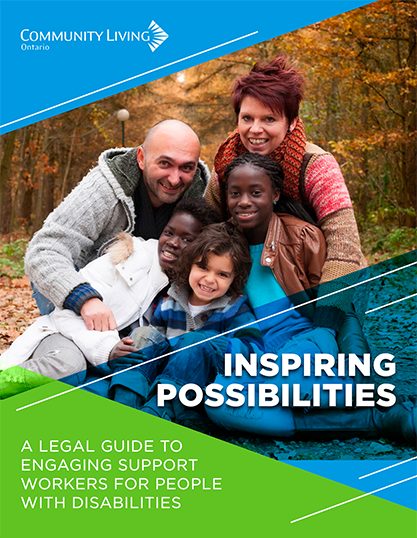The federal government released its fiscal update yesterday, which has been much-anticipated in light of its immense response to the COVID-19 pandemic. As predicted, the government announced that it will have a whopping $381.6 billion deficit this year, mostly due to over $490 billion in spending on COVID-19 measures. Despite the large deficit, the government plans on spending up to $100 billion to kick start the economic recovery in the country.
In its economic statement, the government has recognized that the recovery must be “intersectional,” which includes support for Canadians with disabilities. We have prepared an overview of the new government measures below that are relevant to people with disabilities and their families.
Family Supports
In 2021, the government will provide up to $1,200 for each child under the age of six to low- and middle- income families who qualify for the Canada Child Benefit (“CCB”). Families with a net income below $120,000 will receive four tax-free payments of $300 each, starting after the related legislation has passed and continuing into April, July and October 2021. Families with a net income over $120,000 will receive four tax-free payments of $150 at the same time, for a total benefit of $600. There was, however, no update on the Child Disability Benefit.
The government also acknowledged the “She-cession,” where mothers are leaving the workforce at a higher rate than fathers to care for children during the pandemic. As a result, the government has proposed a new child care vision for Canada for more “affordable, accessible, inclusive and high-quality child care from coast to coast to coast.” The government will provide $20 million over five years for a Federal Secretariat on Early Learning and Child Care to engage stakeholders and review child care policy. Early learning and child care funding has historically included consideration of children from diverse populations, including children with disabilities and varied learning needs.
Registered Disability Savings Plan (“RDSP”)
The federal government confirmed its commitment to the changes to the RDSP that it had promised in its 2019 budget. As of January 1, 2021, the federal government will eliminate the requirement for an RDSP to be closed if the beneficiary becomes ineligible for the Disability Tax Credit (“DTC”), recognizing that some Canadians may have episodic disabilities. If a person loses their DTC eligibility, any government contributions remaining in the RDSP will not need to be repaid back to the government, whereas before the RDSP would have to be closed. (A transitional rule also ensured that an RDSP would not be required to close after March 21, 2019, when the change was announced, and before 2021 solely because the beneficiary becomes DTC-ineligible.)
The federal government also modified the formula for the “assistance holdback amount,” which must be repaid to the government if a withdrawal is made from an RDSP or an RDSP is closed within a ten-year period following the payment of a government contribution. The purpose for the modified formula is for lesser amounts of government contributions to be held back from beneficiaries who become ineligible for the DTC after they turn 50 years of age.
Mental Health Supports
The government has invested another $93 million in mental health and virtual care in 2020-21. Fifty per cent of Canadians have experienced their mental health worsen during the pandemic, and the Canada Suicide Prevention Service has a reported a 50 per cent increase in overall call volume. The government has funded a free online portal, Wellness Together Canada, to provide access to educational content, self-guided therapy, peer-to-peer support, and one-to-one counseling, which has held 1.8 million sessions over text or phone since starting in April 2020.
Housing
The government will invest $1 billion in its Rapid Housing Initiative (“RHI”) which will provide funding to create up to 3,000 affordable housing units. It is expected that the RHI will address housing gaps faced by vulnerable Canadians, including people with disabilities.
Skills and Training Supports
The government acknowledged that marginalized populations were at risk of falling further behind because of the pandemic, which could have an impact on their careers and financial security. In order to help these populations build upon their skills and training to re-enter the workforce, the government has committed to investing $274.2 million, of which $65 million will go to the Opportunities Fund for Persons with Disabilities, starting in 2021-22 for two years. The Opportunities Fund for Persons with Disabilities will help to create inclusive workplaces, support career advancement and increase support for existing activities. The government has also committed $144.2 million to Indigenous Skills and Employment Training, which includes assistance for Indigenous people with disabilities.
In addition, the government has also provided $1.5 billion in additional funding for Workforce Development Agreements with provinces and territories to offer skills training and employment supports, including specific funding targeting people with disabilities. New funding for the Youth Employment and Skills Strategy of $575 million will benefit youth with disabilities as well.
Relief for Student Loans
The government will provide $329.4 million in relief to recent graduates by eliminating interest on the repayment of the federal portion of Canada Student Loans and Canada Apprentice Loans for 2021-22. This will benefit people with disabilities who comprise 37 per cent of borrowers under the Canada Student Loans Program’s Repayment Assistance Plan, which provides financial relief to those experiencing difficulties making payments.
Diversity on Corporate Boards and in Senior Management
The government will provide $33 million over 3 years to support the 50-30 Challenge, which asks organizations to increase diverse representation on corporate boards and in senior management positions. The Challenge includes 50 per cent gender parity and 30 per cent representation of underrepresented populations, including people with disabilities. The government funding will assist diversity-serving organizations in supporting public and private sector corporations to achieve these goals, starting in 2021-22.
Inclusive Digital Services
The government has committed $20.5 million over two years to increase the capacity of the Canadian Digital Service to deliver digital services that are inclusive and accessible to Canadians, including people with disabilities. This will help to create more efficient services and programs, with less time and effort spent on navigating government processes.
PooranLaw will continue to monitor ongoing changes to government funding and policy, and will keep you informed as we learn more. In the meantime, if you require legal assistance, we encourage you to reach out to your regular PooranLaw lawyer, or any member of our team.
Note: This article provides general information only and does not constitute, and should not be relied upon as, legal advice or opinion. PooranLaw Professional Corporation holds the copyright to this article and the article and its contents may not be copied or reproduced in any form, in whole or in part, without the express permission of PooranLaw Professional Corporation.







